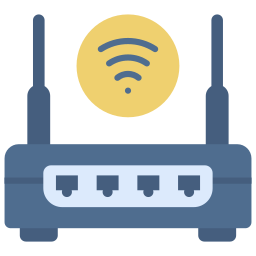
Router and Network Hardware Components: A Comprehensive Overview
A router is one of the most essential hardware components in a computer network. It functions as a traffic director, managing the flow of data between different networks and ensuring that information reaches its correct destination. Routers are used in both home and enterprise environments to connect multiple devices to the internet or to other networks. They play a crucial role in determining the best path for data to travel, especially when multiple routes are available. Routers work at the network layer of the OSI model and are capable of managing both internal and external data traffic efficiently.
Network hardware components refer to the physical devices that are used to build and operate a computer network. These components enable communication between different devices and allow users to access resources and services across local and wide area networks. Some of the most common network hardware components include routers, switches, modems, network interface cards (NICs), hubs, and access points.
Main Functions and Applications of a Router
Directs data packets between networks, choosing the most efficient route.
Connects multiple networks, such as a local network to the internet.
Provides firewall and security features to protect against unauthorized access.
Offers support for both wired and wireless connectivity.
Assigns local IP addresses to connected devices through DHCP.
Supports Network Address Translation (NAT), allowing multiple devices to share a single public IP address.
Enables remote management and monitoring through web interfaces or mobile apps.
Integrates with other network devices like switches and modems for expanded functionality.
Key Network Hardware Components
Switch: A switch is a device used to connect multiple devices within a local area network (LAN). It operates at the data link layer and directs data only to the intended recipient device, improving network efficiency and reducing data collisions.
Modem: A modem (modulator-demodulator) is used to connect a local network to an internet service provider (ISP). It converts digital signals from a computer into analog signals for transmission over telephone or cable lines, and vice versa.
Network Interface Card (NIC): This hardware component is installed in a computer or device to provide network connectivity. It allows devices to connect to wired or wireless networks and communicate using standard network protocols.
Hub: A hub is a basic networking device that connects multiple Ethernet devices, making them act as a single network segment. Unlike a switch, it broadcasts data to all connected devices, which can result in inefficiencies and collisions.
Access Point (AP): An access point is used to extend the wireless range of a network and allow wireless devices to connect. It connects to a wired router or switch and provides wireless connectivity for mobile devices and computers.
Firewall Hardware: A firewall is a security device that monitors and controls incoming and outgoing network traffic based on predetermined security rules. Hardware firewalls are often integrated into routers but can also exist as standalone devices.
Repeater: A repeater amplifies and retransmits signals to extend the range of a network. It is used when the network coverage area exceeds the transmission capacity of the existing hardware.
Free vs Paid Usage of Routers and Network Hardware
Routers and other network hardware are physical products and are not free. Users must purchase them from hardware vendors. However, some ISPs provide basic routers or modems for free as part of their service package, often with limited features. High-performance routers with advanced features such as improved security, multiple antennas, high-speed data transfer, and parental controls typically come at a higher cost.
Some router brands also offer premium software features or cloud-based management tools that require a subscription fee. For example, enterprise-grade routers often include advanced network management, analytics, or VPN support, which may involve licensing fees or service charges.
Comparison with Other Network Components
Routers manage traffic between networks, while switches manage traffic within a network.
Modems connect a network to the internet, but routers manage internal device communication and assign IP addresses.
Hubs are less efficient than switches and are rarely used in modern networks.
Access points expand wireless coverage but depend on routers for IP management and routing.
NICs are essential for any device to access a network but do not manage traffic.
Firewalls add a layer of security, whereas routers handle data forwarding.
Repeaters merely extend the signal, unlike routers that determine the best path for data.
Conclusion
Routers and related network hardware components form the foundation of modern networking. Each component plays a specific role in ensuring that data can be transmitted quickly, securely, and efficiently. While routers are essential for directing data between networks and managing local traffic, other devices such as switches, modems, and access points complement their functionality. Understanding these components is crucial for setting up, maintaining, and securing a network environment. Though the hardware itself requires an initial financial investment, the long-term benefits in terms of connectivity, performance, and scalability make it a necessary part of any digital infrastructure.












